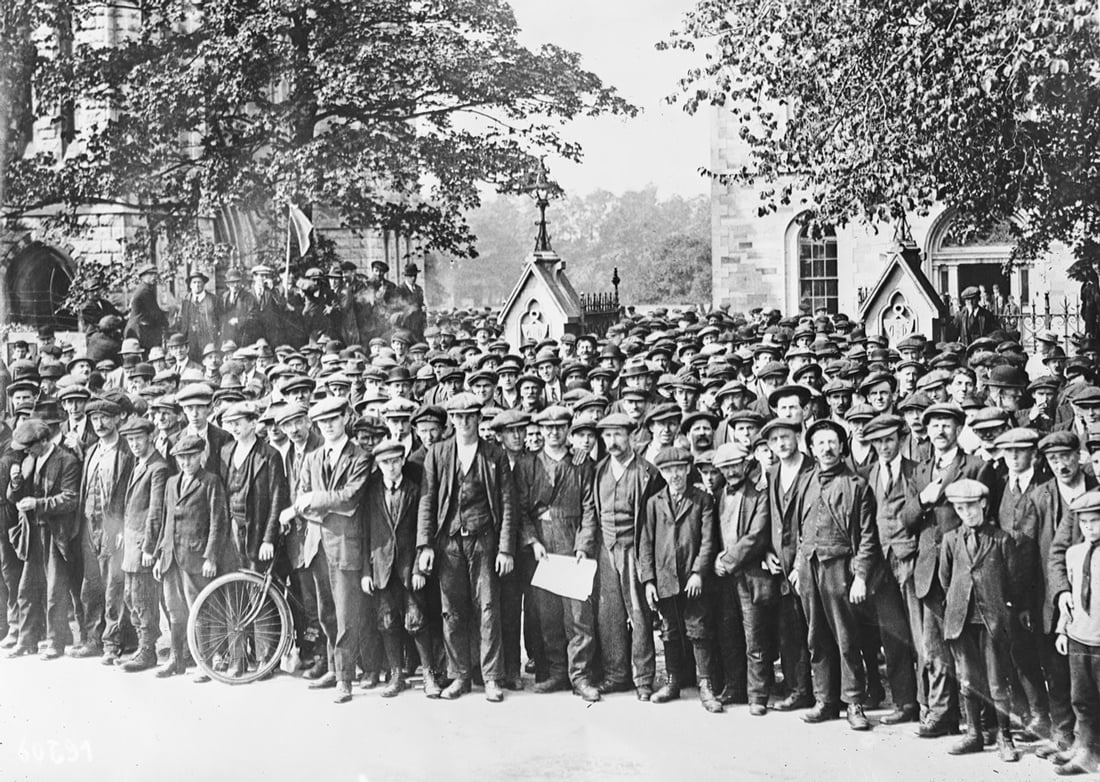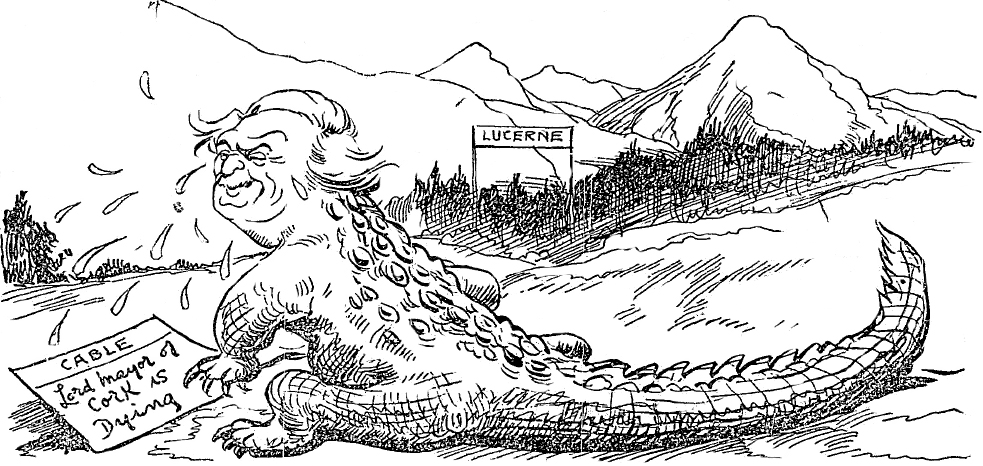British government says it won’t stop MacSwiney from ‘starving himself’ to death in Brixton jail
Prayers and international protests held in support of Cork’s dying Lord Mayor
Brixton, 7 September 1920 - The British labour movement has called for the release of the Lord Mayor of Cork, Terence MacSwiney, who is on his 27th day of a hunger strike at Brixton Prison and is believed to be close to death.
The Trade Union Congress, which represents six and a half million British workers, held a meeting yesterday in Portsmouth where it called for MacSwiney's release and also claimed that if he dies, the labour movement will hold the British government responsible for his death and for the ‘blind stupidity’ of an approach that made reconciliation between Ireland and Britain more difficult to achieve.
The Prime Minister, David Lloyd George, recently issued a statement deeply regretting what he said was Terence MacSwiney’s decision to ‘starve himself’. He insisted that the British government would be sticking to its decision and would not be releasing the Lord Mayor. To do so, he suggested, would require the release of every hunger striker regardless of his offence:
‘If the cabinet, therefore, departed from its decision a complete breakdown of the whole machinery of law and government would inevitably follow. Whatever the consequence, I cannot take that responsibility.’
British Pathé footage of Terence MacSwiney
The British government’s position stands in defiance of the growing support for MacSwiney’s release in Ireland, Britain and internationally.
Outside the Brixton prison gates, several thousand people have been congregating every day and in Washington D.C., pickets have been held outside the offices of the State department in support of MacSwiney.
In Ireland, alongside the Bishop of Cork and other leading Catholic clerics, the Chief Rabbi of Dublin and Minister of the Dublin Hebrew community has sent a telegram to King George V urging for MacSwiney’s release.
In Dunmore, a regatta was called off at the request of the Mayor of Waterford, in protest at the treatment of the Lord Mayor of Cork. A concert in aid of a protestant schoolhouse that went ahead was halted when members of the Irish Volunteers interrupted the entertainment and, from the platform, demanded its suspension owing to MacSwiney's condition. The audience promptly left the building.

|

|
Dubliners, including some of the city's children, offering prayers for the Lord Mayor (Images: Bibliotheque nationale de France)
Le Matin newspaper in Paris, which reproduced two large photographs of MacSwiney and the Lady Mayoress, has alleged that ‘They [the British government] are allowing the struggle between England and Ireland to transform into a moral conflict between England and civilisation.’
This is in keeping with the tenor of much of the French press which has afforded extensive and sympathetic coverage of the Lord Mayor’s plight. ‘Public opinion is profoundly moved’, La Liberté reports, ‘by the grandeur of the sacrifice and by the force of will of this voluntary martyr of Brixton prison.’
The Times in London claims that should Terence MacSwiney die, his name, heretofore unknown outside his own city, will ‘take rank with Fitzgerald, with Emmet, and with Tone in the martyrology of Ireland – his memory more eloquent and infinitely more subversive of peace than he himself could ever be.’
MacSwiney has been visited in prison by family, friends and by his chaplain, Fr Dominic, in recent days. Fellow Sinn Féiner, Art O’Brien observed during his visit with the Lord Mayor that while practically all life had drained from his body, the ‘vitality of the mind, as shown in the eyes, was a most remarkable contrast … He spoke a few words to me, but, although I bent down to catch what he said, I could only guess at what he meant to convey.’
MacSwiney is hunger striking in protest against the fact that he was tried by a military court.

MacSwiney's visitors including (left to right) his wife Muriel; Fr Dominic, his chaplain; his brother Seán; and his sisters Mary and Annie. (Images: Illustrated London News [London, England], 4 September 1920)
[Editor's note: This is an article from Century Ireland, a fortnightly online newspaper, written from the perspective of a journalist 100 years ago, based on news reports of the time.]





















